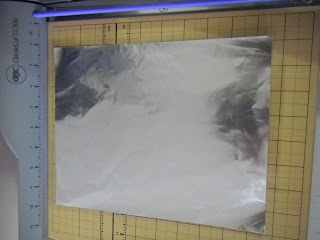Materials:
2 Xerox brand Overhead Projector Sheets - free from dumpster (two packs of 100 sheets)
2 sheets Aluminum foil, generic.
4 feet Radio Shack burglar alarm window tape.
Tape (not for electronics, but all I have here)
Starting with plastic sheet, foil on top. Cut to exactly 8"x10"
Plastic is 8 1/2x11"
Conductive burglar alarm tape (sticky side against plastic, other side on foil)
Taped to secure. Repeat again with a second layer.
Runs along the entire length for uniformity and good conductivity.
Not as good as solder, but I dont want lumps.
I have mad soldering skills & was taught by
a NASA contractor AFTER I'd thought I was good already,
so I could do it "without lumps". This is just a proof-of-concept anyways.
Final 16-17nF!
After testing with a battery, it holds a tiny charge that is quickly dissipated by my meter.
I really need better tools at home. Great justification to buy more!
I will continue to experiment with dual layers and other sizes.
I can take this to work and try out on a hi-pot tester to see what the breakdown is.
I'm hoping to score 15kV at least on this!
For education or other DIY plans, try:











